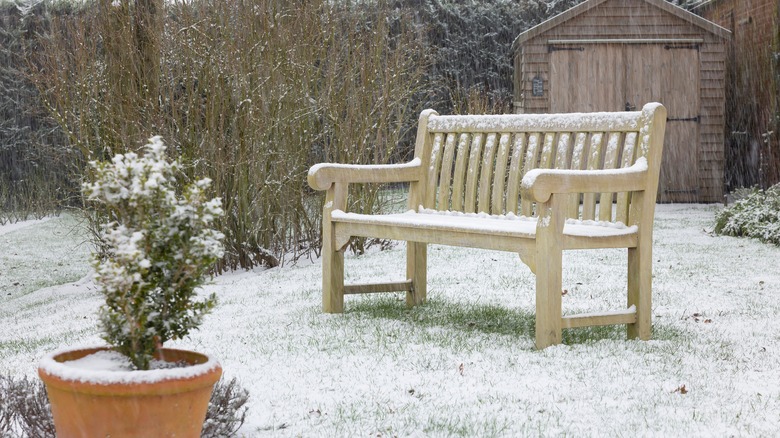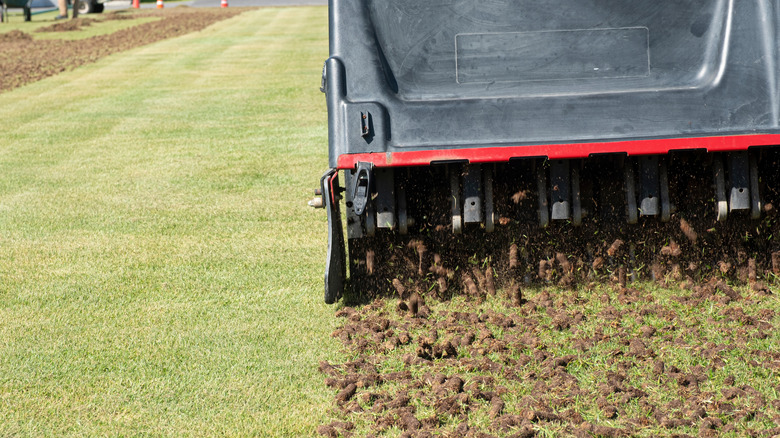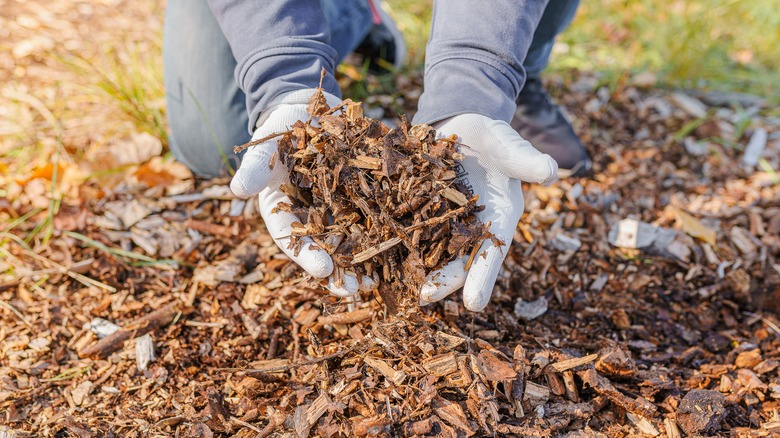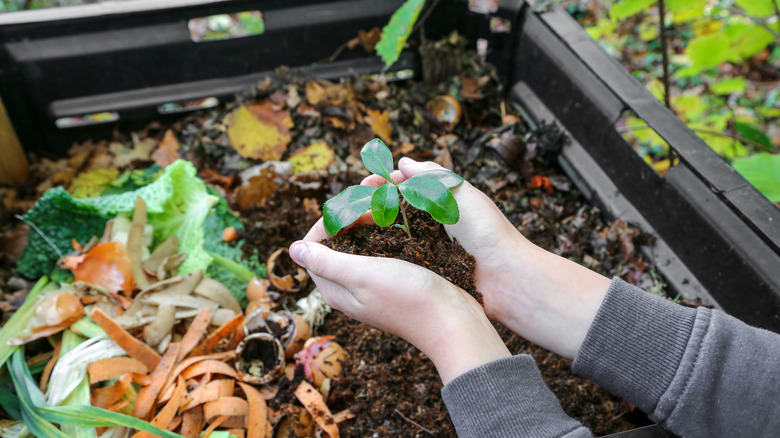5 Simple Tips For Preparing Your Lawn For The Winter Months
Winter can be a harsh period of change for the landscaping elements surrounding your home. Your grass can take a major pounding from the drop in temperature and potential snowfall or freezing cold rain that is common in some parts of the country. While sod is typically resilient, there are a few steps that homeowners should take each year as the summer weather begins to turn and the temperature begins to drop in advance of the long winter months dominated by cold weather and the shortest hours of sunlight at any point in the year (via The Washington Post).
From mulching strategies to grass length options, homeowners face a few key decisions as the winter descends upon the Northern Hemisphere. With these five essential tips, making the most of your preparation time can be easy, leaving you with more opportunities to sit back and relax, enjoying the waning warmth and brilliant display of color that the fall season has to offer.
1. Shorten the grass length in preparation for dormancy
In many parts of the country, grass varieties planted in abundance won't need to be cut at all throughout the winter months. David Domoney notes that trimming your lawn during this cold weather period is totally fine, as long as the lawn actually needs it. Conventional wisdom suggests that each mow should take off about 1/3 of the overall length of each blade of grass, so following this guidance during the winter remains a great option for maintaining lawn health.
For many, the grass won't gain much in the way of height during the winter, so mowing won't be an issue. However, the longer the blades of grass are, the harder your network of turf plant roots and aerial growth will have to work to maintain good equilibrium. The cold can shock leafy structures on plants, and many trees shed their green components in the fall to account for changing water and temperature features (these are called deciduous trees, via The Royal Horticultural Society).
Trimming your grass a little shorter than normal in the period leading up to the winter months will help train your grass to naturally perform the same basic function, creating a less green structure on the plant that the root system will have to care for once the temperature drops.
2. Aerate the lawn to prevent soil compaction
It's a good idea to consider aerating your lawn in advance of the winter months if you routinely experience problems with soil compaction. Lawn aeration is the process of punching holes in the soil in order to create better airflow down into the soil and roots that live within it (via Cardinal Lawns). Soil aeration isn't typically advised during winter, but in the months that precede it, you can provide the lawn with unparalleled access to the aerial environment and oxygenate the entire ecosystem that you so carefully cultivate within the grass.
In areas that see extensive rain or snowfall through winter, soil can easily become compacted, stunting future growth as spring begins to return the heat. In addition, because sunlight hours are shortened — sometimes dramatically — during the winter, your soil may not have the opportunity it needs to shed excess moisture and pressure that results from snow coverage or rainfall. This sets your growth back coming into springtime.
It's really easy to accomplish this task. Homeowners with large lawn areas might consider renting equipment that streamlines the process, but a simple rake or pitchfork can get the job done just as well. All you'll need to do is depress the tool of your choice into the soil at equal intervals to create a consistent blanket of small holes across the expanse. Then, by aerating the lawn, you get a jump start on future growth by protecting it from the worst of winter.
3. Consider light mulching options
Mulching is a core task in any lawn care routine. Homeowners should mulch their garden beds at least once a year, regardless of where they live and what they grow in these edge displays. Typically, professionals will suggest mulching in the spring and the fall (via Patuxent).
A light layer of mulch insulates underlying plant growth and soil from the extreme drop in temperatures that accompany winter. However, even in warmer regions, the temperature change is substantial enough to shock plants and keep them from returning in the new year.
While mulch is a critical tool for insulation and appropriate moisture retention, too much coverage can be a detriment. Therefore, removing substantial leaf dropping from the lawn is advisable to give your landscaping the best in mulching without suffocating the ground layer. Leaves can be a positive addition to compost heaps or the soil itself, but you must use this organic material in moderation for the best possible impact on your soil chemistry and health.
4. Utilize compost for nutrient-dense additions
Compost is king when it comes to creating nutrient-rich soil. This goes for garden beds, potted plants, and the grass layer that dominates your lawn. All growth areas can benefit from compost use, and the best material you can exploit as a nutrient addition comes from careful but simply pre-planning on your part.
Nurturing a compost bin is all about balance. The Cornell Waste Management Institute recommends a healthy addition of roughly equal parts green materials and brown materials. Fallen leaves, wood chips, cardboard boxes from the last Amazon delivery, and more are all great brown materials. As for the greens, grass clippings, food scraps, and trimmings from plants in your garden all play an essential role.
Adding both of these to a compost bin will net a rich compost product that can be added to the soil throughout your lawn, returning critical nutrients to the Earth and resulting in explosive growth throughout the year. Of course, composting is always a welcome addition, but it can be immensely beneficial to add a layer in the fall in advance of the seasonal turn toward dormancy. This builds up nutrient reserves in the soil and provides the kickstart that your grass and plants need to thrive in just a few short months.
5. Elongate or eliminate your mowing routine going into winter
Depending on where you live, you might not need to mow the lawn at all during winter. On the other hand, some homeowners will do this once or twice throughout the entire season. Either way, it's a good idea to train your lawn in advance of this off-season of sorts — just like you might train your hair leading up to a drastically changed haircut and style.
Premier Lawns reports that mowing your lawn changes the surface area of each leafy growth, resulting in a drastic and immediate change in the chemical process of building sustenance through photosynthesis. For this reason, it's advisable to stick to the 1/3 rule for mowing.
Leading up to the winter, you should consider changing your mowing routine before the natural drop-off in trimming needs happens. If you had particular trouble in restarting growth during the last spring, letting your lawn grow a little shaggy before mowing (and raising your mower blade slightly to accommodate for the difference in the 1/3 proportion) can provide an ever-so-slight addition to the total surface area without creating significantly greater moisture requirements in the plant.





